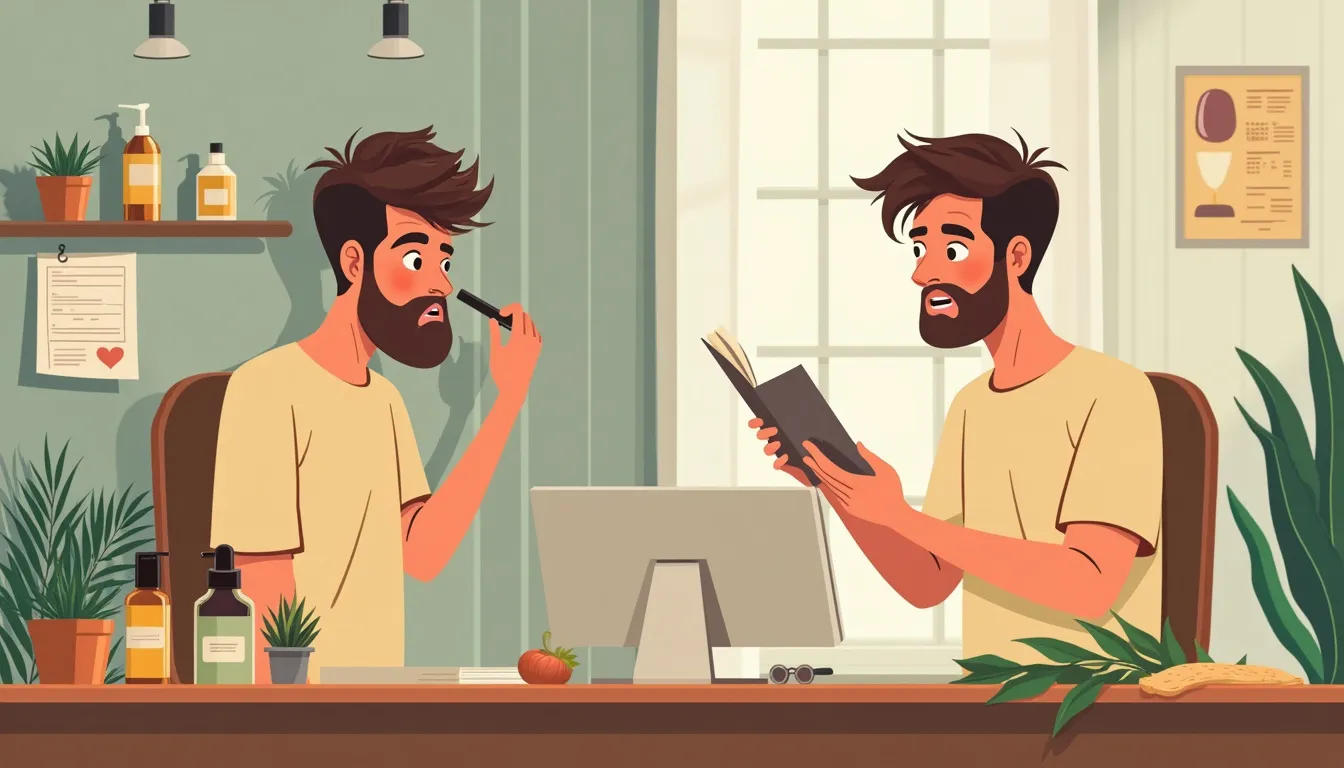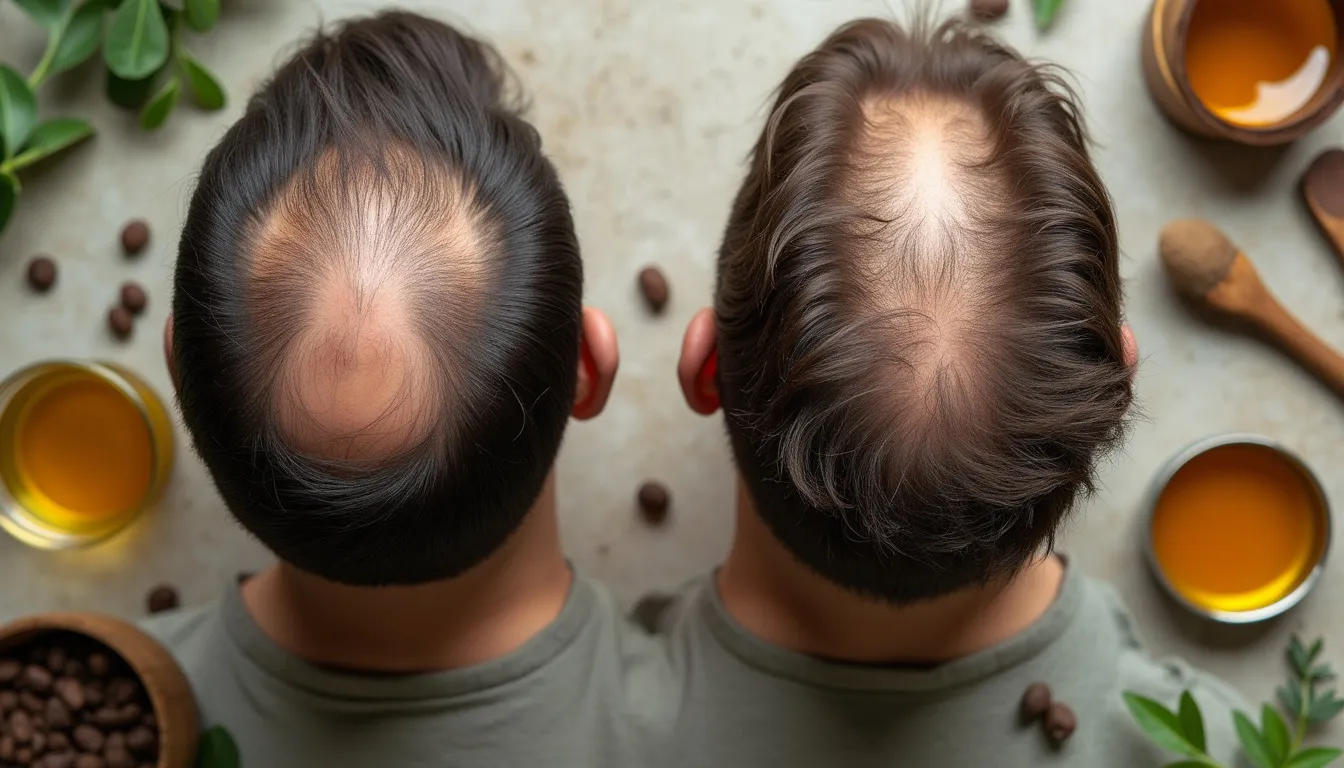Are you noticing more hair on your pillow or in the shower drain? Maybe you’ve caught a glimpse of your hairline in the mirror and felt a twinge of concern. If you’re wondering whether you might be experiencing the early signs of balding, you’re not alone. Hair loss is a common issue that affects millions of people worldwide, but spotting the initial indicators can be tricky. In this comprehensive guide, we’ll explore the telltale signs of balding that you should be on the lookout for, helping you identify potential hair loss before it becomes more noticeable. From receding hairlines to changes in hair texture, we’ll cover everything you need to know to stay ahead of the curve. Plus, we’ll discuss practical steps you can take if you suspect you’re experiencing hair loss, including when to seek professional help and what treatment options are available. Whether you’re in your twenties or approaching middle age, understanding the early signs of balding is crucial for maintaining a healthy head of hair. So, let’s dive in and uncover the secrets to spotting those first hints of hair loss – because when it comes to your locks, knowledge truly is power.
Recognizing the Early Signs of Balding
When it comes to hair loss, catching it early can make all the difference. Recognizing the early signs of balding is crucial for taking prompt action and potentially slowing down or even reversing the process. In this section, we’ll explore the telltale indicators that your hair might be thinning, helping you stay ahead of the game in your hair health journey.
A. Receding Hairline
One of the most common and noticeable early signs of balding is a receding hairline. This typically starts with slight changes in your hairline, often referred to as a widow’s peak. Here’s what to look out for:
- M-shaped pattern: Your hairline may start to form an M-shape, with the hair receding more at the temples.
- Higher forehead: You might notice your forehead appearing larger as the hairline moves back.
- Asymmetry: Sometimes, one side of the hairline may recede faster than the other.
To track changes in your hairline, consider taking regular photos of your hairline from the same angle and in similar lighting conditions. This can help you spot gradual changes that might otherwise go unnoticed.
B. Thinning Crown
Another early sign of balding is thinning at the crown, or the top of your head. This can be tricky to spot on your own, as it’s not always visible in the mirror. Here are some ways to identify crown thinning:
- Wider part: If you part your hair, you may notice the part becoming wider over time.
- Scalp visibility: Your scalp may become more visible through your hair, especially under bright lights.
- Sunburn surprise: You might experience unexpected sunburn on your scalp, a sign that your hair is thinning and providing less coverage.
To check for crown thinning, try using a handheld mirror in combination with your bathroom mirror to get a clear view of the top of your head. Alternatively, ask a trusted friend or family member to take a look for you.
C. Excessive Hair Shedding
While it’s normal to lose some hair daily, excessive shedding can be one of the early signs of balding. On average, people lose 50-100 hairs per day. If you’re noticing significantly more hair loss than usual, it might be cause for concern. Look out for:
- Hair on your pillow: Waking up to find more hair than usual on your pillow.
- Clogged shower drain: Your shower drain getting clogged more frequently with hair.
- Hair on your clothes: Noticing an increase in hair on your clothes or in your hairbrush.
To get a better idea of how much hair you’re losing, try the pull test. Gently run your fingers through a small section of clean, dry hair, applying light pressure at the roots and pulling through to the ends. If you end up with more than 2-3 hairs, this could indicate excessive shedding.
D. Changes in Hair Texture and Volume
Sometimes, the early signs of balding aren’t about hair loss at all, but rather changes in the texture and volume of your hair. Pay attention to these subtle shifts:
- Finer hair: Your hair may feel thinner or more delicate than before.
- Reduced volume: Hairstyles that once looked full might now appear flat or limp.
- Difficulty styling: You might find it harder to style your hair or maintain certain hairstyles.
- Increased frizziness: Your hair may become more prone to frizz or static.
These changes can be gradual, so it’s helpful to compare your current hair texture and volume to photos from a few years ago. You might be surprised at the difference!
Remember, experiencing one or more of these early signs of balding doesn’t necessarily mean you’re destined for significant hair loss. Factors like stress, diet, and certain medications can cause temporary hair thinning. However, if you’re concerned about what you’re seeing, it’s always best to consult with a healthcare professional.
Being proactive about your hair health can make a world of difference. If you’re looking for a comprehensive approach to combat hair loss, consider checking out HairFortin, a program designed to help stop hair loss in its tracks. By staying vigilant and taking action early, you can potentially slow down or even reverse the balding process, keeping your locks luscious for years to come.

Taking Action: What to Do When You Notice Early Signs of Balding
Noticing the early signs of balding can be a daunting experience. However, it’s crucial to remember that identifying these signs early on puts you in a better position to take action and potentially slow down or even reverse the process. Let’s explore the steps you can take when you start noticing those telltale signs of hair loss.
A. Consult with a Dermatologist or Trichologist
The first and most important step when you notice early signs of balding is to seek professional help. A dermatologist or trichologist can provide expert insight into your specific situation and help determine the underlying cause of your hair loss.
Here’s why consulting a professional is crucial:
- Accurate diagnosis: They can distinguish between different types of hair loss and identify any underlying medical conditions.
- Personalized treatment plan: Based on your specific case, they can recommend the most effective course of action.
- Early intervention: The sooner you start treatment, the better your chances of preserving your hair.
- Professional monitoring: They can track your progress and adjust treatments as necessary.
Remember, what works for one person may not work for another, so professional guidance is invaluable when dealing with early signs of balding.
B. Explore Treatment Options
Once you’ve consulted with a professional, it’s time to explore the various treatment options available. These can range from medications to lifestyle changes, each targeting different aspects of hair loss.
Medications
Several FDA-approved medications have shown effectiveness in treating hair loss:
- Minoxidil (Rogaine): Available over-the-counter, this topical treatment can help stimulate hair growth and slow balding.
- Finasteride (Propecia): A prescription medication that works by blocking the hormone responsible for male pattern baldness.
- Dutasteride: Similar to finasteride but potentially more potent, though it’s not FDA-approved for hair loss treatment in the US.
Lifestyle Changes
Sometimes, simple lifestyle adjustments can make a significant difference in managing early signs of balding:
- Stress management: High stress levels can contribute to hair loss, so consider incorporating stress-reduction techniques like meditation or yoga into your routine.
- Balanced diet: Ensure you’re getting enough protein, iron, and other essential nutrients that promote healthy hair growth.
- Regular exercise: Physical activity improves blood circulation, which can benefit your scalp and hair follicles.
- Quit smoking: Smoking has been linked to hair loss, so kicking the habit could help your hair health.
C. Consider Hair Care Adjustments
Your daily hair care routine can play a significant role in managing the early signs of balding. Here are some adjustments to consider:
- Switch to a gentle, sulfate-free shampoo to avoid stripping your hair of natural oils.
- Use a conditioner to keep your hair moisturized and reduce breakage.
- Avoid harsh chemical treatments like bleaching or perming, which can damage hair follicles.
- Be gentle when styling your hair – avoid tight hairstyles that can cause traction alopecia.
- Consider using a scalp massage tool to stimulate blood flow to your hair follicles.
Remember, healthy hair starts with a healthy scalp. Investing in good scalp care can make a significant difference in managing early signs of balding.
D. Monitor Progress and Seek Emotional Support
Dealing with hair loss can be an emotional journey. It’s important to monitor your progress and seek support when needed:
Tracking Your Progress
- Take regular photos of your hairline and crown to track changes over time.
- Keep a journal of your treatments and any changes you notice in your hair.
- Follow up regularly with your dermatologist or trichologist to assess your progress.
Emotional Support
The psychological impact of hair loss shouldn’t be underestimated. Consider these options for emotional support:
- Join online forums or support groups for people experiencing hair loss.
- Talk to friends or family members about your concerns.
- Consider speaking with a therapist if you’re struggling with self-esteem issues related to hair loss.
Remember, you’re not alone in this journey. Many people experience early signs of balding, and there’s no shame in seeking help or support.
By taking proactive steps when you notice early signs of balding, you’re giving yourself the best chance at maintaining a healthy head of hair. From consulting professionals to exploring treatment options, adjusting your hair care routine, and seeking support, there are many ways to address hair loss. And if you’re looking for additional resources, consider checking out this comprehensive hair loss prevention program for more strategies to combat balding.
In conclusion, recognizing the early signs of balding is crucial for those who wish to address hair loss proactively. By being aware of changes such as a receding hairline, thinning crown, excessive hair shedding, and alterations in hair texture and volume, you can take timely action to potentially slow down or even reverse the process.
Remember, noticing these early signs doesn’t mean you’re destined for complete baldness. Many effective treatments and strategies are available to help manage hair loss. The key is to act promptly and seek professional advice. Consulting with a dermatologist or trichologist can provide you with a proper diagnosis and personalized treatment plan tailored to your specific needs.
As you embark on your journey to address hair loss, it’s essential to approach the situation holistically. This means not only exploring medical treatments but also considering lifestyle changes, adjusting your hair care routine, and monitoring your progress closely. Don’t underestimate the importance of emotional support during this process, as hair loss can have a significant impact on self-esteem and confidence.
Ultimately, dealing with the early signs of balding is about taking control of your hair health and overall well-being. With the right approach and support, you can face this challenge head-on and potentially achieve impressive results. Remember, you’re not alone in this journey, and there are numerous resources and professionals available to help you along the way.
If you’re looking for a comprehensive program to help stop hair loss and promote hair growth, consider checking out HairFortin at https://hairsecurity.net/HairFortin. This program offers a natural approach to combating hair loss and may be a valuable addition to your hair care regimen. Whatever path you choose, stay positive and proactive in your efforts to maintain a healthy head of hair.
